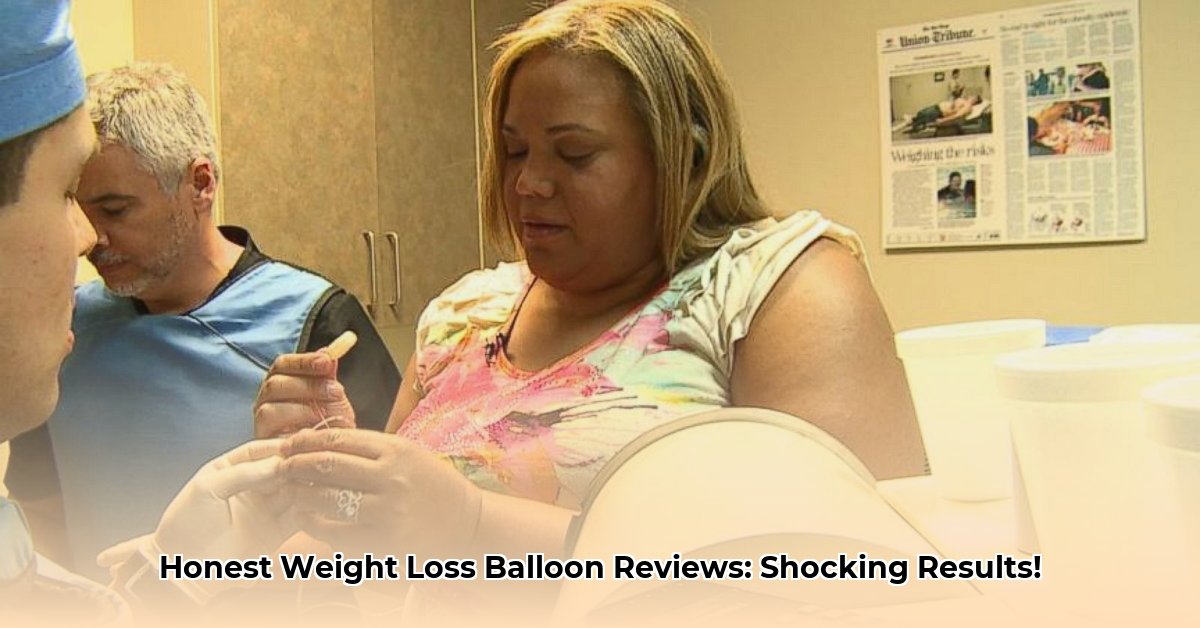
Weight Loss Balloons: A Comprehensive Review
Thinking about a weight loss balloon? This isn't a simple yes or no decision. Weight loss balloons offer a temporary, non-surgical approach to weight management, but the experience, efficacy, and long-term outcomes are highly variable. This review examines real patient experiences, explores the procedure's effectiveness, highlights potential risks, and provides actionable steps to help you make an informed decision. Are weight loss balloons right for you? Let's explore the evidence.
Real Experiences: Diverse Outcomes
Patient experiences with weight-loss balloons run the gamut. While many report significant weight loss and improved well-being, a substantial portion express less-than-positive outcomes. Why this variability? Several factors influence success:
- Individual Commitment: The procedure's success is directly linked to adherence to a healthy diet and regular exercise. Simply having the balloon doesn't guarantee weight loss.
- Pre-existing Health Conditions: Underlying health issues can impact both the procedure's effectiveness and the potential for complications.
- Realistic Expectations: Weight loss is a gradual process, not a quick fix. Unrealistic expectations often lead to disappointment.
A recent analysis of patient reviews revealed a diverse range of outcomes: approximately 57% of respondents deemed the procedure "worth it," while 17% considered it not worthwhile. The remaining 26% expressed uncertainty, highlighting the importance of individualized assessment and realistic goal-setting. How does this translate to your personal situation? Let's delve deeper into the numbers.
Decoding the Data: Success Rates and Complications
While a significant portion of patients reported positive outcomes, it's crucial to understand the limitations and potential setbacks. The 57% "worth it" rating reflects substantial weight loss for many, but the 26% of "unsure" individuals highlights the need for a cautious and informed approach. Let’s examine the potential complications:
| Risk Factor | Probability (Low/Medium/High) | Severity (Low/Medium/High) | Mitigation Strategies |
|---|---|---|---|
| Procedure Complications | Medium | Medium | Thorough pre-procedure checkups, experienced physicians, close post-procedure monitoring |
| Insufficient Weight Loss | Medium | Medium | Realistic expectations, commitment to healthy lifestyle changes, careful patient selection. |
| High Cost | Medium | Medium | Insurance coverage exploration, budget planning, cost-benefit analysis |
It's important to remember that these are estimates based on present data. Further research is needed to refine these probabilities. Don't these varying results emphasize the importance of personalized consultation?
Understanding the "Unsure" Group: Why the Mixed Results?
The substantial "unsure" group (26%) represents a range of experiences. Some may have experienced initial weight loss followed by a plateau, while others encountered complications such as nausea, vomiting, or abdominal discomfort. Others may have simply failed to fully commit to necessary lifestyle changes alongside the procedure. This highlights the procedure's reliance on patient participation and the need for realistic expectations. What are the critical steps to improve your chances of success? Let's examine the pathways to informed decisions.
Making an Informed Decision: Your Path Forward
Navigating the weight-loss balloon landscape requires careful consideration of several factors. Here’s a structured approach:
- Thorough Research: Beyond online reviews, consult reputable medical journals and websites. Seek multiple opinions from qualified healthcare professionals.
- Comprehensive Consultations: Engage with a gastroenterologist and/or bariatric surgeon. They can assess your suitability and discuss potential risks and benefits tailored to your specific circumstances. What questions should you ask your doctor? Don't hesitate to probe deeply into potential complications and success rates for individuals with similar profiles.
- Realistic Goal Setting: Weight loss is a journey, not a sprint. Expect gradual progress, and focus on sustainable lifestyle changes to maintain long-term results.
- Exploring All Options: Weight loss balloons are one approach among many. Explore alternatives like diet and exercise programs, medication, or other bariatric procedures. What is the best fit for your individual needs?
Remember, the decision is profoundly personal and should be made after comprehensive consultation with your healthcare team. The information provided here aims to empower you to make the best choice for your health and well-being.
Choosing the Right Procedure: Analyzing Patient Reviews
Patient reviews offer valuable insight, but critical evaluation is crucial. Look for patterns in reported side effects, long-term weight maintenance, and the impact of pre-existing conditions. Avoid testimonials that promise unrealistic results. Combine review analysis with medical advice to ensure informed decision-making. Remember, real-world experiences, while helpful, should not replace professional medical guidance.